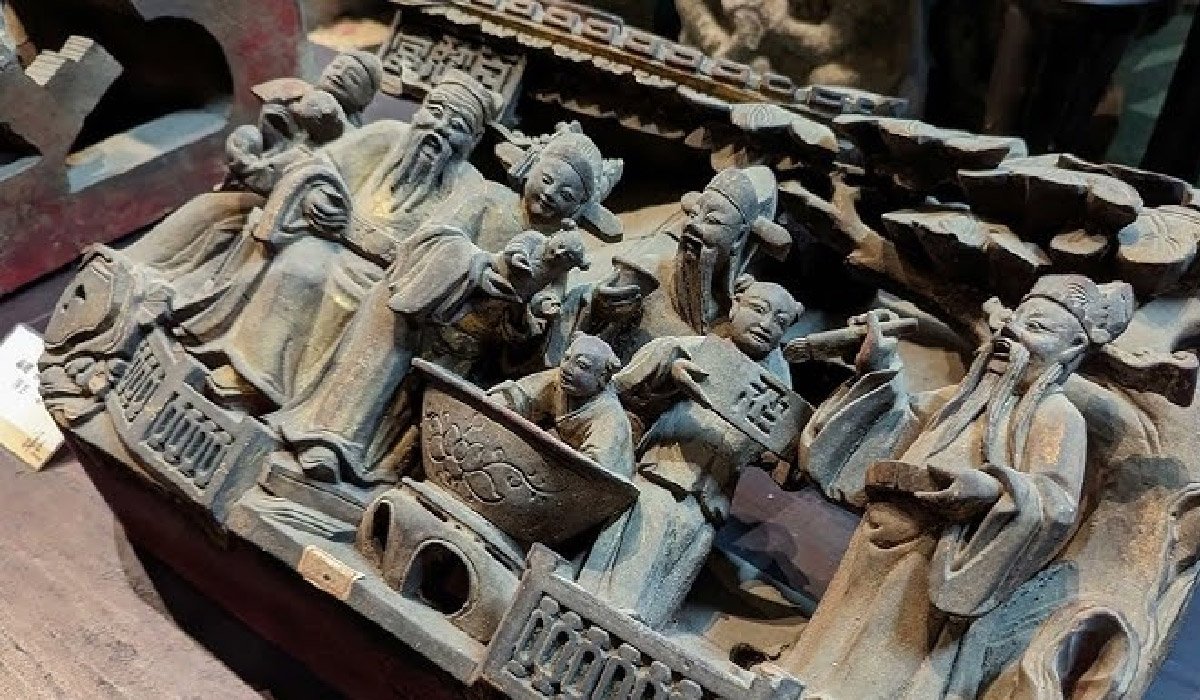Introduction
Ancient artz reflects the earliest forms of creativity and cultural identity known to humankind. From the moment our ancestors left handprints on cave walls, humans have instinctively used visual expression to communicate, record, and elevate their experience of the world. Art is more than aesthetic; it is humanity’s shared language across time.
In this article, we will take a deep journey through the vast and varied landscape of ancient artz—from prehistoric cave paintings and carved figurines to monumental temples and mythological frescoes. We will uncover why these works were created, how they were crafted, and how they continue to shape and inspire modern society. With thousands of years and hundreds of civilizations represented, understanding ancient artz gives us unparalleled insight into our shared past, our evolving beliefs, and our endless pursuit of beauty, meaning, and memory.
What Is Ancient Artz? Understanding the Term
The term “ancient artz” typically refers to artistic and visual creations made by early human civilizations from the Upper Paleolithic period, roughly 40,000 BCE, all the way to the early Middle Ages, around 800 CE. This includes some of the most iconic artistic accomplishments in history—cave paintings, carved idols, pottery, sculpture, and temple architecture. These were not mere decorations; they were tools of communication, expressions of religious devotion, and markers of status and power.
Ancient artz served a wide variety of purposes, including spiritual worship, political propaganda, social identity, and utilitarian function. In modern usage, “Ancient Artz” has also become a popular stylized term across social media, educational platforms, and digital museums. Pages on Instagram, YouTube documentaries, and TikTok creators now bring ancient art into contemporary dialogue, helping a new generation explore, appreciate, and learn from these age-old masterpieces.
Why Ancient Artz Was Created – Purpose and Meaning
Ancient artz wasn’t created for beauty alone—it had deeply rooted social, spiritual, and political purposes. In most early societies, art was a way to communicate with the divine, record myths, and secure spiritual favor. Tomb art in Egypt, for example, was created to ensure a smooth journey into the afterlife. In Mesopotamia, carvings and inscriptions reinforced a king’s divine authority.
Ceremonial art included idols, amulets, and ritual objects used in religious or seasonal ceremonies. Many artworks also served a symbolic function, representing abstract ideas like fertility, chaos, death, or eternity. Art was also used to codify social hierarchies, with rulers shown larger and more detailed than others, reinforcing their supreme status. In short, ancient artz was multifunctional—it guided rituals, preserved history, and asserted cultural identity.
Materials and Techniques Used in Ancient Artz
Early artists worked with the materials available to them, showing immense creativity and technical skill despite limited tools. Stone was one of the first and most enduring materials, used in statues, buildings, and carved monuments. Clay was molded into pottery, tablets, and figurines—often fired to harden and decorated with pigments or carvings. Pigments themselves came from natural sources like ochre, charcoal, and minerals; these were mixed with binders like fat or water to create lasting colors on walls, fabrics, and stone.
As societies advanced, metals like bronze, gold, and silver were introduced into artistic production, allowing for more detailed and durable works, especially in jewelry, sculpture, and religious artifacts. Other organic materials like wood, papyrus, silk, and bone were also widely used, though many of these have decayed over time. Regardless of the medium, ancient artists consistently created objects of both functional and spiritual value.
Key Civilizations and Their Artistic Contributions
The development of ancient artz is best understood by examining the major civilizations that shaped it. During the Paleolithic era, humans painted cave walls at Lascaux and Altamira with vibrant images of animals, possibly for ritualistic purposes. They also carved Venus figurines—small statues emphasizing fertility and reproduction. In Mesopotamia, ziggurats towered over city-states while cylinder seals and tablets told stories of kings and gods. The Standard of Ur and the Stele of Hammurabi are standout examples of narrative and legal art from this period.
In Egypt, art flourished in tombs, temples, and pyramids, with hieroglyphs, statues, and wall paintings emphasizing the journey to the afterlife. Symbols like the ankh, scarab, and Ma’at feather embodied complex theological concepts. Ancient Greece introduced humanism and idealized beauty, creating statues like Discobolus and building architectural wonders like the Parthenon. Pottery with red-figure and black-figure techniques depicted mythology and daily life.
The Romans inherited and expanded upon Greek styles, introducing mosaics, realistic portraiture, and massive public monuments like the Colosseum and triumphal arches. In India, from the Indus Valley’s delicate pottery to Ajanta’s Buddhist cave murals, art was deeply tied to religion and philosophy. China produced exquisite jade carvings, bronze vessels, silk paintings, and the awe-inspiring Terracotta Army, guided by Taoist and Confucian thought. In Mesoamerica, the Olmec, Maya, and Aztecs created colossal heads, ritual masks, and astronomical codices, reflecting their deep understanding of time and cosmos. In Africa, Nok terracotta sculptures, Saharan rock art, and ceremonial masks reflected a communal spiritual connection with nature and ancestors.
Characteristics of Ancient Artz
Across these varied cultures, certain characteristics commonly appear in ancient artz. Stylization was prevalent—figures were often abstract or idealized rather than realistic. Hierarchical scale was another key trait: kings and gods were depicted larger than ordinary people to symbolize importance. Symbolism played a huge role, with colors, shapes, and animals conveying layered meanings—blue for heaven, red for chaos, lions for power, serpents for rebirth.
Artworks were rarely standalone pieces—they were usually part of religious, architectural, or narrative contexts. They also emphasized ritual function; a sculpture or mural was often activated through ceremony or prayer. Finally, narrative composition was essential. Whether on a Mesopotamian tablet or a Roman fresco, ancient art often told stories—of creation, of conquests, of divine interaction—that helped civilizations make sense of their world.
Iconic Artworks and Why They Matter
Some pieces of ancient artz stand out for their historical, spiritual, and artistic value. The Narmer Palette from Egypt shows the unification of Upper and Lower Egypt, using symbolic imagery and hierarchical layout to convey political power. The Venus of Willendorf, though tiny, encapsulates a universal concern with fertility and survival.
The Discobolus and Riace Bronzes from Greece exemplify the pursuit of human perfection and motion. The Standard of Ur offers a visual tale of war and peace in early Mesopotamia. The Fayum Portraits of Roman Egypt are a haunting blend of realism and ritual—painted likenesses of the dead placed on mummies. The Ajanta Caves in India offer massive rock-cut monasteries covered with delicate paintings depicting the Buddha’s life and teachings. These works endure because they not only represent technical mastery but also capture the spirit and values of the people who made them.
Ancient Artz as a Reflection of Culture and Belief
Art in ancient civilizations wasn’t separate from daily life—it was a reflection of the culture’s entire belief system. Cosmology and mythology shaped what people saw in the stars and how they built their temples. Gods and divine beings filled the walls of tombs and altars. Seasonal cycles like planting and harvest were encoded in art to ensure blessings.
Ancestral worship was central, especially in African and Asian traditions, where sculptures and carvings kept the spirits close. Death and the afterlife were major themes, especially in Egypt and Mesoamerica, where art guided the soul beyond death. Each brushstroke, carving, or symbol was a way to align with nature, express morality, or access the spiritual world. Ancient artz was a cultural mirror—what societies valued most, they captured in their art.
How Ancient Artz Was Made – The Role of the Artist
Ancient artists often remained anonymous, working under strict religious or political guidelines. In Egypt, consistency mattered more than creativity—artists followed sacred rules, ensuring gods and pharaohs were always depicted correctly. In Greece, art gradually shifted towards individualism, and sculptors like Phidias or Polykleitos signed their work. In India and China, artists often came from hereditary guilds, passing down skills for generations. Some were attached to temples or royal courts.
The materials they used were often sourced locally or through trade routes—lapis lazuli from Afghanistan, ivory from Africa, or papyrus from the Nile. Tools were simple—chisels, brushes, kilns—but the results were complex and sophisticated. Artists worked collaboratively, especially on large-scale murals, temples, or tombs. Whether they carved, painted, or cast in metal, these creators held an important yet humble role—bridging the earthly and divine through their hands.
Modern Discovery and Preservation of Ancient Artz
Many of the most astonishing ancient artz pieces were discovered accidentally. The Lascaux caves were found by teenagers in France in 1940. The Terracotta Army was unearthed by farmers digging a well in 1974. In recent years, a construction crew in Turkey stumbled upon what is now called “Ancient Artz”—a vast, multi-civilization site containing Hittite, Assyrian, and Greek layers. Modern archaeology uses tools like satellite imaging, magnetometry, and 3D scanning to find and preserve fragile sites.
However, ancient art is under constant threat from looting, climate damage, and war. Many museums now digitize their collections, offering virtual tours and open-access archives to the public. Ethical debates around repatriation—like the Rosetta Stone or Elgin Marbles—continue to shape how ancient artz is treated. Preservation today is about more than physical safety; it’s about education, accessibility, and cultural respect.
Ancient Artz in Popular Culture and Modern Inspiration
Ancient artz continues to inspire everything from blockbuster films to fashion and architecture. Movies like The Mummy or Gladiator borrow heavily from ancient motifs. Video games like Assassin’s Creed Origins recreate ancient Egypt in stunning detail. Designers use Greek key patterns, scarab jewelry, and pyramid shapes in everything from runways to tattoos. Educational platforms, including YouTube channels, online courses, and apps, now teach kids and adults alike how to decode and appreciate ancient symbols. On social media, pages like @ancient.artz on Instagram and TikTok deliver bite-sized facts, dramatic reconstructions, and virtual museum tours. These digital spaces ensure that ancient artz remains alive—not just in history books, but in the imagination of every new generation.
Timeline of Ancient Artz
| Era | Timeframe | Key Artistic Contributions |
|---|---|---|
| Prehistoric | ~40,000–4000 BCE | Cave art, Venus figurines |
| Mesopotamian | ~3500–539 BCE | Relief carvings, ziggurats, cylinder seals |
| Egyptian | ~3100–30 BCE | Pyramids, tomb paintings, hieroglyphs |
| Greek | ~800–31 BCE | Sculpture, pottery, temple architecture |
| Roman | ~509 BCE–476 CE | Mosaics, frescoes, veristic portraits |
| Indian | ~2500 BCE–Present | Cave murals, temple carvings, bronzes |
| Chinese | ~2000 BCE–Present | Jade, silk painting, Terracotta Army |
| Mesoamerican | ~1200 BCE–1500 CE | Codices, masks, pyramids, astronomy-linked |
Final Thoughts
Ancient Artz is not just about what people made—it’s about who they were. It’s our collective biography carved in stone, painted on walls, and shaped by fire. Whether it’s a Venus figurine tucked into a hunter’s satchel or a towering temple aligned with the stars, ancient artz connects us to something deeper: the timeless human desire to express, understand, and remember.
Even with limited tools, ancient artists conveyed profound thoughts that still resonate today. In the 21st century, as technology connects the world, looking back at ancient artz reminds us that creativity, spirituality, and storytelling have always been part of being human. Through preservation, study, and appreciation, we continue this journey—not just as viewers, but as participants in the great story of art itself.
READ ALSO: Gray Poplar Online Retail: Powerful Guide to Sell & Buy Smart
FAQs About Ancient Artz
Q1. What is ancient artz?
Ancient artz refers to creative works made by early human civilizations, such as cave paintings, sculptures, pottery, and temples. These artworks were used for religion, storytelling, rituals, and showing power.
Q2. Why did ancient people create art?
Ancient people created art to express their beliefs, honor their gods, tell stories, and decorate their lives. Art was also used for rituals, communication, and showing social status.
Q3. What materials were used in ancient artz?
Ancient artists used stone, clay, metal, pigments, wood, and even bones. They made paint from natural colors like ochre, charcoal, and plants.
Q4. Which civilizations are famous for ancient artz?
Famous civilizations known for ancient artz include Egypt, Mesopotamia, Greece, Rome, India, China, Mesoamerica, and Africa. Each created unique art styles based on their culture and beliefs.
Q5. Why is ancient artz important today?
Ancient artz helps us understand how early people lived, thought, and believed. It connects us to human history and inspires modern art, design, and learning.






